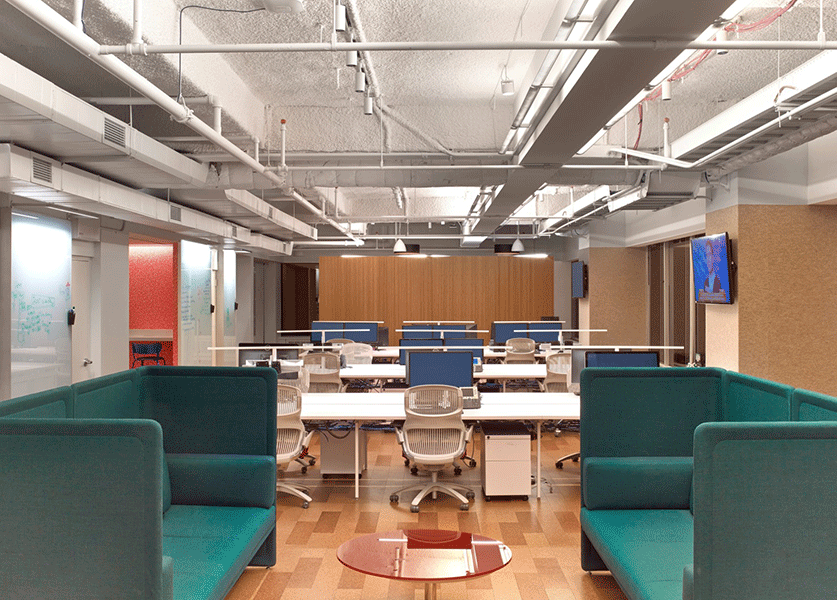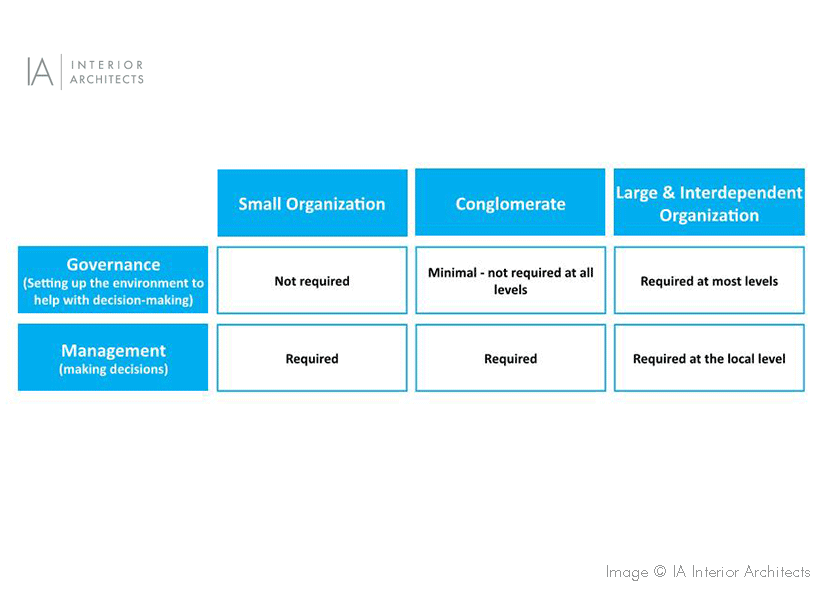Real estate and facilities management practices and processes are reorganizing to handle increasingly complex and dynamic real estate portfolios.

Innovations in furniture and finishing design, such as Herman Miller’s Living Office and Steelcase’s V.I.A. system, have helped the workplace design industry adapt to the “New Ways of Working.” As organizations rapidly evolve to support systems of continuous change, hyper flexible workplace systems introduce an exponentially higher level of complexity that differs greatly from the way real estate and facilities (RE&F) organizations were designed to manage at their outset.

One way to manage the chaos of the constant need to match supply and demand is for RE&F to embrace a more democratically-driven and free-market driven structure, facilitated by improved technology/data systems, balanced structure driven by principles and framework, and a media-driven approach to communications. The scope of the challenge for this particular issue is limited to very large and highly interdependent organizations that must remain complex in order to innovate and stay competitive. Current RE&F best practices are designed to leverage new space technologies on small and large-but-low-complexity organizations without many issues.

Yet within large and highly interdependent organizations, implementing highly flexible systems within current RE&F practices can create challenges that may include:
- Unclear accountability of an ongoing understanding for both the individual department and whole business needs, and the ability to make the right real estate, procurement, space allocation, space planning, and design decisions.
- Clearly identified methods of obtaining data to understand how members of the organization interact to help decision makers strategize at a higher level. One such instance might include campus-level amenities including conference centers and proto-typing labs, which may be utilized by individual departments though each may not be aware another department’s usage.
- The right level of space-related communication and change management that is centrally driven.
- The right level of governance within RE&F at a regional, city, neighborhood, or building level. For example, it may not be appropriate for a North American headquarters to dictate seating densities in London where culture and real estate expectations do not align. On the other hand, specific aspects of branding decision may need to be centralized.
At the end of the day, space is a resource just like people, and money. Therefore, this problem is not unique and our industry can learn from management science, political science, and economics. In particular, we should look at where organizations and governments have a different “span of control,” or how much oversight anyone has, based on factors such as geographical dispersion, talent density, similarity of task, volume of task, and visibility of data.

There is no perfect system. All over the world, governments are still struggling with span of control. However, we have a great deal of history and precedence from which to learn. For example, with a good degree of certainty, we know that a dictatorship rarely works in a very large economy because the system is too complex for a central decision-making body. As an organization grows large and space needs become increasingly complex, RE&F needs to be selective with processes and policies that are centrally-driven.
On the other hand, there are decisions that can only be driven centrally because local entities do not have the whole picture (i.e. all the data), and a myopic perspective combined with self-interest can be counter-productive. All of this is lubricated by a combination of centrally funded and free-market driven media that aids in the dissemination of knowledge and helps inform decisions at both the local and central level.
So, as space becomes more complex, RE&F within large and complex organizations reorganize to become:
- Technology savvy. Include talent that can work with unstructured and large data, help visualize and communicate it to constituents and decision makers, and implement real-time feedback systems by leveraging social and mobile platforms.
- Politically savvy. Have a clear governance and communications structure that clearly dictates how decisions are made, where, and by whom, dependent on the nature of the business.
- Media savvy. Have a robust and thriving media strategy that is supported both centrally and individually to help disperse information and aid in decision-making, change management, and feedback.

The Institute of the Future (IFTF), a Palo Alto, Calif.-based research center that specializes in long-term forecasting and futures research, outlined key skills the workforce needs in 2020. As my colleague Kelly Funk summarizes, “Computational thinking and new media literacy are just a few of the skills IFTF predicts will be needed of our future workforce. With employees acquiring new skills – and faster than ever – the tools and workspaces to support them will also need to adapt.” As purveyors of the workplace experience, RE&F teams are becoming increasingly diversified to best accommodate the increasing range of needs presented by organizations and building occupants. Software engineers, political scientists, and communications professionals as full-time RE&F staff, or as advisors, are facilitating a more democratically and free-market driven system to help manage the complexity and drive a smarter, more efficient real estate portfolio.
